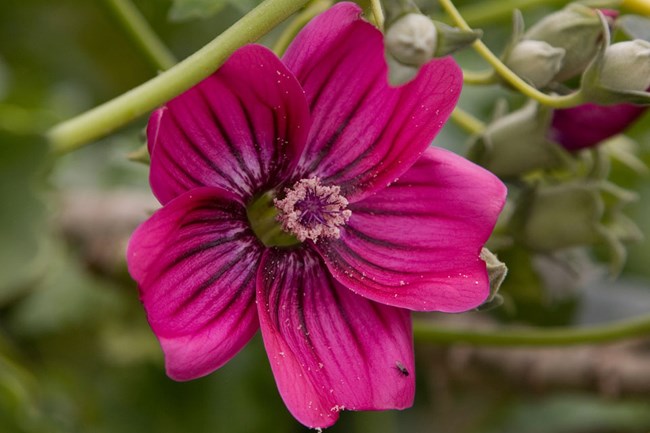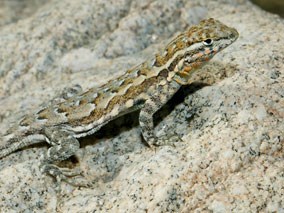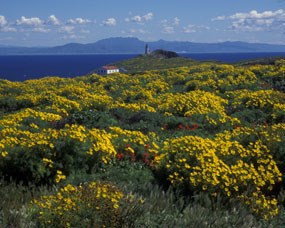
As you explore Anacapa Island, you may be surprised by the beauty and color of the succulent, green-leaved, red-flowered plant that blankets parts of the island. You may also be surprised to learn that this plant is actually a nonnative, invasive plant (red-flowered iceplant, Malephora crocea) that is negatively affecting the island's fragile ecosystem of plants and animals. This iceplant was brought to Anacapa by the U.S. Coast Guard in the 1940s and 50s for landscaping and erosion control. Soil disturbance from construction and building of an island-wide road system and severe plant browsing by introduced rabbits allowed iceplant to spread rapidly. The expansion of iceplant has overwhelmed many areas formerly supporting native plants. Iceplant, originally from South Africa, grows vigorously on Anacapa because it is not constrained by the natural controls it faced in its homeland. Therefore it readily outcompetes native plants for the limited resources of water, light, and nutrients. Today, non-native iceplant densely covers about 20 percent of east Anacapa and it has extended its range onto middle Anacapa as well. Although iceplant may be pleasing to the eye, it forms monocultures that reduce the diverse natural vegetation and food sources on which native animals depend. To ensure the recovery of the island's native vegetation, Channel Islands National Park is implementing a restoration project that will remove the iceplant from Anacapa and replace it with a variety of native plants. Park staff, cooperators, and volunteers are removing iceplant and replanting cleared areas with native plants grown from island-collected seed. Native species to be restored include coreopsis, alkali heath, gum plant, yarrow, needlegrass, California barley, giant ryegrass, live-forever, buckwheat, and goldenbush. A combination of effective and environmentally sensitive methods will be used to remove iceplant, while encouraging re-growth of native species. Methods include hand and mechanical removal, use of herbicide, and solarization (covering iceplant to exclude light and intensely heat it). State-licensed personnel will apply approved herbicide in select areas, following strict protocols to protect sensitive plants and animals. Volunteers will be critical to the success of this effort. We are recruiting community groups, schools, and individuals to assist with removing the non-native iceplant and replacing it with native plants. For information or to volunteer, visit Volunteer. Benefiting from Restoration 
Side-blotched Lizards 
Giant coreopsis |
Last updated: June 24, 2016
